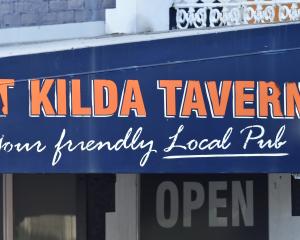More than 300,000 people over 75 years old are now housed in almost 35,000 retirement village units across the country. Forsyth Barr broker Lyn Howe discusses the huge expansion of the aged-care industry in recent years with ODT senior reporter Simon Hartley.
New Zealand has 510 retirement villages operating across the country - 55% of which are owned by the corporate sector.
While the building of retirement homes eased in 2017 compared with the previous year, more than 2000 were added, bolstering numbers to an estimated total of almost 35,000 retirement village units.
Auckland alone has 81,350 people over 75, Wellington 31,120 and Canterbury 42,190.
Otago's number rose from 13,480 people in 2008 to 15,820 last year, the number of units available rising from 592 to 987 during the same period.
Many factors underpin the rise in rest-home occupancy, including increasing life spans and the large cohort of ``baby boomers''' now entering retirement, who are likely to be more asset rich than their parents were.
Forsyth Barr broker Lyn Howe said a second major consideration was the inability of district health boards to provide the care needed in terms of land, buildings, staff and systems.
``The health boards don't have the funding or resources to do this and are finding it cheaper to fund a number of beds in homes.
``We'd expect this to be ongoing,'' she said.
Other factors included rising house prices, where people cashed out of family homes or investment property portfolios which had made large capital gains.
Rising house prices since the 2007-08 global financial crisis had helped underpin the rest-home build rate and the sale and resale of retirement village units, data which often shadowed the rise and fall of house prices.
``People are going into homes later, often when they have had a health scare or incident,'' Mrs Howe said.
Mrs Howe said people able to fund their way into retirement villages often elected to go there because it allowed them to live independently for as long as possible, and then get a higher level of care when they needed it without having to shift across town to a different institution.
Unsurprisingly, listed companies had taken advantage of the burgeoning sector, many of the larger companies land banking some two to three years ahead of planned developments.
For several companies, overseeing their own building contracts had been crucial in holding escalating building costs down, while also maintaining staff levels, which was important given widespread industry shortages.
While there were 244,200 people aged over 75 in retirement homes in 2008, that figure had risen 33.7% to 306,700 in 2017.
Mrs Howe said the listed company operators were now dominating the supply of retirement homes.
``Auckland was the key driver and new unit delivery lifted there again in 2017 and has increased every year since 2013,'' Mrs Howe said.
She said the percentage of people over 75 going into rest-homes had risen from 9.8% of that demographic in 2008 to 13.5% in 2017.
Correspondingly, retirement village units nationally had risen 74%, from 20,085 in 2008 to 34,969 last year.
The South Island had 7300 units at present and the North Island 27,660 units.
Mrs Howe said as of this month 55% of retirement units were owned by companies, 31 were in private ownership and 14% were owned by not-for-profit operators.
Villas accounted for 64% of all unit stocks, and 15% were serviced apartments.
Mrs Howe said six years ago the private market accounted for about 40% of stock, but that was down to 31% now.
``Over the last four years the national private build rate had been dropping,'' she said.
In its place, the corporate sector had seen particularly strong growth in Auckland, Wellington and Canterbury in 2016 and Auckland and the Bay of Plenty during 2017, she said.
``Privates had significant development plans going into the global financial crisis in 2007 and some of this fuelled activity for subsequent years as the property market recovered.
``However, the past four to five years has been dominated by corporate operators,'' she said.
While Auckland had been the driver, and activity was under way or planned on the North Shore and west and central Auckland, oversupply risks remained in some areas, Mrs Howe said.
Listed operators Ryman Healthcare and Summerset had lifted their respective build rates.
Of the listed operators, Metlifecare and Summerset were typically building smaller care facilities, of 40-50 beds, targeted at servicing their own villages' internal demand.
Ryman remained ``heavily committed'' to building the largest facilities, usually with 120 beds and 80 serviced apartments, and was the only operator consistently focusing on providing a ``full continuum of care'', or rest-home, hospital and dementia beds, in every village.
``With the rapidly ageing population in Australia and New Zealand there's increasing demand for retirement village accommodation and aged care, in particular Ryman's hospital and dementia facilities,'' Mrs Howe said.
Some of Ryman's highlights included strong off-the-plan unit presales and high resale pricing per unit, when compared with its competitors, she said.
``Ryman is a leading New Zealand growth story while also having defensive qualities, due to the strength of its franchise and its `needs based' focus,'' Mrs Howe said.
She described Ryman as a ``market leader'', given it did not have the barriers faced by newcomers, including care expertise, brand awareness, scale and access to capital.
``Ryman has all of these,'' she said.
However, she noted a key risk for Ryman was unit oversupply from a ``significant'' pipeline of proposed units across the sector.
``[Also] any sizeable downturn in the current buoyant housing market conditions poses a threat to sales volumes and pricing,'' she said.
Summerset had a strengthening development and sales track record, and a land bank of properties which would take about the next seven years to develop, Mrs Howe said.
``[Construction] execution risk is increasing as Summerset tackles large, intensive Auckland developments late in the cycle,'' she said
As with Ryman, risks to Summerset included unit oversupply and any housing downturn.
However, Summerset had only a low level of ``needs based''' care facilities, but was shifting the mix towards a higher proportion of care apartments, targeting about 50 for each village.
``Summerset is developing beds and serviced apartments, [but] its portfolio remains heavily weighted to independent living,'' she said.
Mrs Howe said retirees buying into Ryman or Summerset had to pay the market rate, which they might not necessarily get back in respect of their estate.
However, the occupant and family were generally happy to be somewhere with a good track record and where they received good care, Mrs Howe said.
``The aged-care companies use this capital to build more homes to meet more demand,'' she said.
Demand was being driven by demographics and social changes and no government would be able to fully meet the need from the public purse, Mrs Howe said.
On the sector's outlook, Mrs Howe said proposed retirement village units and care bed developments around the country stood at a total of 7752, of which Metlifecare, Ryman and Summerset accounted for more than 4000 between them.












